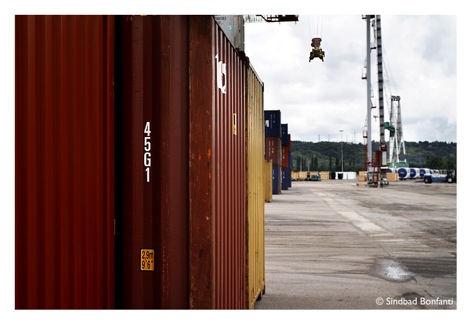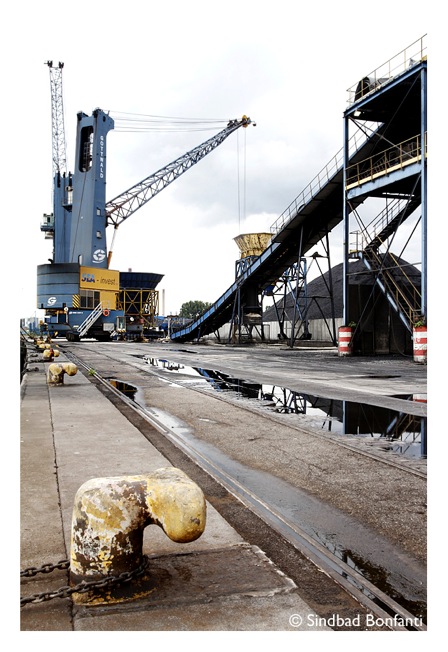Do ports constitute an advantage or disadvantage for cities? Why is it that various cities with declining ports have been very successful, whereas some cities with thriving ports have been struggling to be competitive? How can ports be economic drivers for cities? What is the future development potential of port-cities? Just a few of the questions that are frequently asked in port-cities. Very relevant questions, but also questions that are difficult to answer. Why? Basically because the field is largely unexplored. There are many experts on cities, a fair amount on ports, but not a great deal on port-cities. Spatial segregation of ports and cities has gone hand in hand with academic (and administrative) compartmentalisation. Moreover, the knowledge on port-cities is fragmented and specific rather than comprehensive and comparative, and in most cases not policy relevant. That is the reason why we have at the OECD created the Port-Cities Programme and taken up the challenge to come up with a comparative assessment of port-cities: their performance, the impacts of ports on their territory, and port-city policies that have worked to increase the positive effects.
 Economic benefits of ports spill over to other regions.
Economic benefits of ports spill over to other regions.
How does the Programme work? At the core of it is a a series of case-studies on port-cities. Each case-study provides a detailed assessment of a particular port-city, formulates policy recommendations and is presented to the relevant local and national authorities. These case studies follow a common framework, which has allowed us, as we progress in time, to compare the cases and draw horizontal lessons. The studies are published separately, but they also generate a lot of knowledge and data that will be brought together in a large synthesis publication on port-cities. Currently, six case studies have been published, including on Le Havre/Rouen/Paris/Caen, Hamburg, Helsinki, Marseille, Mersin and Rotterdam/Amsterdam. Others will be published soon, including on the Danube Axis, Durban, Hong Kong and Shanghai. The synthesis publication will be released 9th September during the OECD Port-Cities Conference in Rotterdam.
An essential observation concerns the unbalance of benefits and costs of port-cities. Ports can have great benefits, but most of these benefits spill over to other regions than the port-city. At the same time, many of the negative impacts are very localised. Some of these benefits are well known, such as port-related employment or value added, but knowledge is fragmented and most port economic impact studies are not comparable or well-known. Our synthesis report will present a meta-analysis of the existing impact studies, indicating the range of effects found in these different studies. In several of our case studies we have contributed to existing knowledge by making calculations of port-related employment and value added. In addition, we have looked at the economic specialisations of port-cities and the way in which the port and maritime heritage have shaped the development path of a city. We have observed that shipping and port-related innovation takes predominantly place in port-cities, as can be illustrated by patent data. Moreover, we have calculated – in cooperation with the University of Genoa – that additional port volumes generate local employment: 400 now jobs for every additional million tonnes of port throughput in European ports. Despite these local effects, most of the economic benefits actually spill over to other regions. In our case studies we have been able to illustrate this by calculating the indirect economic links of port clusters (backward economic linkages). A common finding in all these studies is that only a very small share of the backward economic linkages are within the port-region itself. In many cases the links with other (often larger) metropolitan regions are much stronger: large ports play a role that surpasses their local boundaries, an effect that we have quantified in our studies. Whereas the economic benefits from ports are national and supra-national, many of the negative impacts are highly localised. Pollution, noise, dust, congestion are all concentrated in the port-city, in particular around the port.
How to resolve this unbalance? First by increasing the local benefits of ports, second by mitigating negative impacts. But this is easier said than done. Despite increasing policy efforts, little is known about the effectiveness of policies and conditions that are necessary for successful implementation. Ports need to be active and successful in order to generate local benefits – and our studies added new indicators on port efficiency and maritime connectivity – but port competitiveness is only a pre-condition. The more intriguing question is how policies can help to link successful ports to an urban economy. There are different pathways to achieve this, based on industrial development, high-end services, waterfront development or a combination of these. Industrial development in resource-intensive industries, such as steel, coal and petrochemical industries, often takes place close to ports, because of the cost competitiveness of maritime transport, but the global restructuring of these industries is leaving its marks on many port-cities. New possibilities for ports are now emerging as sites for renewable energy production, clean tech development and re-cyclical economies, and ports have used land and incentives to stimulate this development. Alternatively, some port-cities are now developing into world-leading international maritime and trade services centres, banking on their assets, such as a dynamic maritime community and an attractive urban environment. Due to growing economies of scale in shipping and population growth, ports have gradually (sometimes more radically) left the centre of most cities, leaving room for waterfront development. This has also been a source of fruitful port-city development, especially if the waterfront development is somehow able to reflect and connect to the maritime heritage of the site.
Resource-intensive industries are often located close to ports.
In parallel, many ports are not only highlighting their economic value, but also increasingly engaged in the environment. More and more ports have started to introduce green policies, ranging from greening activities within the port, greener shipping and greener hinterland transport; ranging from measuring environmental impacts, to rules, incentives and investments in cleaner technologies. Despite all these new measures, relatively little is known about their effectiveness, so this remains an area of on-going discussion and interest.
 New possibilities for ports are emerging related to renewable energy.
New possibilities for ports are emerging related to renewable energy.
In order to increase positive and limit negative impacts of ports, concerted action is required. Ports have in many cases the tools and possibilities to be “community managers”, but they are often highly dependent on the behaviour of private actors, such as terminal operators, shipping lines and shippers. At the same time, ports are also embedded in a web of relations with public actors, including local, regional and national governments. An important condition for port-policies to work is support of local stakeholders. Many ports have been active in not only in mitigating negative impacts, but in opening up ports and re-connecting with citizens and firms, so as to restore local pride. This can take the form of information and institutional cooperation, but also measures as varied as social media strategies, public spaces in ports, port festivals and open days.
 Ports have left the centre of most cities.
Ports have left the centre of most cities.
So, in conclusion, and to come back to the main question: are ports an advantage or disadvantage to their cities? We will not be able to give you our definite answer (yet), but our educated guess for now is: “it all depends”. Ports can certainly be drivers of urban growth, but this cannot be easily taken for granted. The most successful port-cities are successful because they have rigorous, sustained and innovative policies.
